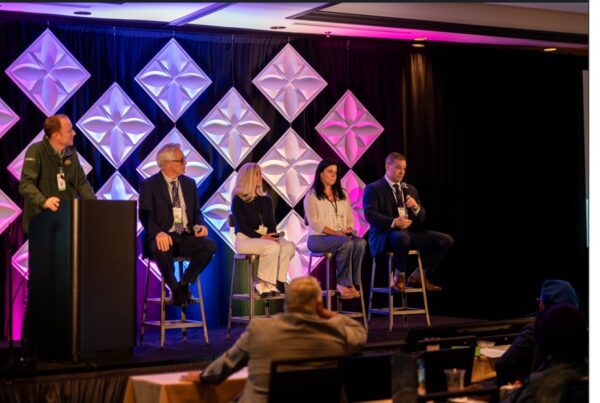What is Vibe Coding?
If you’ve been following the fast-moving world of AI in software development, you’ve likely heard the term vibe coding. Coined by Andrej Karpathy, vibe coding describes a fast, intuitive, and prompt-driven way to build software using AI tools. Instead of carefully architecting every detail, developers “vibe” with an AI coding assistant by describing what they want, iterating quickly, and letting the AI handle much of the build.
It’s coding at the speed of thought. Vibe coding shines in the early-stage prototyping, brainstorming, hackathons, and proofs of concepts, where creativity and speed are the priority as opposed to structure and security.
The Promise of Vibe Coding
According to the Why Vibe Coding Needs to be Taken Seriously report by Gartner, “vibe coding will lead to a massive transformation of the software development role.” This shift from coders to product engineers will have them focus on user outcomes while AI agents handle much of the execution. Vibe coding benefits include:
- Faster Innovation: Teams can quickly prototype and test new ideas, accelerating the innovation cycle.
- Reduced Complexity: AI tools reduce the cognitive load by managing repetitive coding and time-consuming tasks.
- Market Agility: Enterprises that experiment with vibe coding now will be better prepared to adapt to rapid industry changes.
“By 2028, 40% of new enterprise production software will be created with vibe coding techniques and tools.” – Gartner, Why Vibe Coding Needs to Be Taken Seriously
The Risks & Realities
As exciting as vibe coding is, the current reality is more complex. While vibe coding is great for creativity, it has limitations making it unsuitable for enterprise-scale production today.
Gartner recommends to, “Use vibe coding for prototyping and limit it to a controlled, safe sandbox for execution. Do not use vibe-coding software in your production efforts until the tools mature further.”
- Code Quality Concerns: Much of the code generated from vibe coding lacks solid architecture. Errors may be auto fixed by AI but not always in the ways that ensure long-term maintainability.
- Security Risks: Studies show that 45% of AI-generated code contains security flaws, according to Veracode’s 2025 GenAI Code Security report. Without rigorous review, this poses serious enterprise risk.
- Technical Debt: Misalignment and poor maintainability with enterprise standards can lead to costly rewrites later.
How to Use Vibe Coding
The key isn’t to avoid vibe coding but to use it wisely. Here’s how our team and other leading organizations are approaching it:
- Sandbox It: Keep vibe coding in controlled, safe environments for experimentation and prototyping
- Pilot Programs: Enable small, focused teams to use vibe coding for rapid feedback from users.
- Hybrid Approaches: At NLP Logix, we prototype with vibe coding and then scale with AI-assisted engineering. Regardless of who writes the code, 100% of it is reviewed by humans to comply with our standards. This gives our clients the best of both worlds through fast iterations with AI copilots and agents, peer-reviewed, testable, secure code, and accelerated time-to-value, without costly rewrites
Final Thoughts
Vibe coding represents a powerful glimpse into the future of software development, one that will define roles, workflows, and business agility. But like any new technology, it must be adopted strategically and carefully.
Our AI and data experts recommend experimenting with vibe coding to unlock creativity and innovation but to continue to rely on structured, secure and disciplined engineering practices to bring those ideas to life in production.
If you’d like to learn more, explore use cases, or discuss how to bring vibe coding into your innovation process, reach out to us. Our team is here to guide you from vibes to value.





